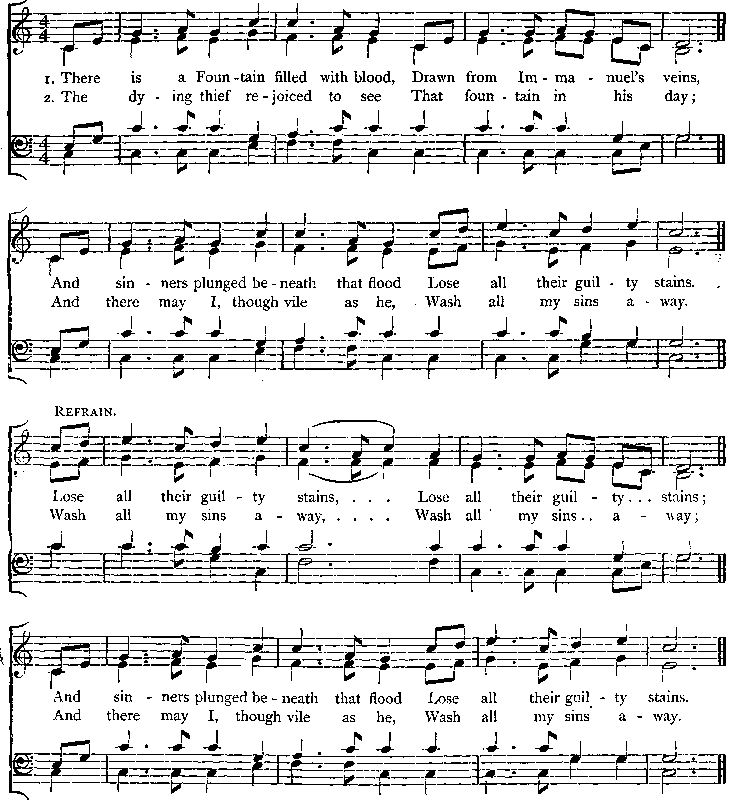Thursday Hymn Reflection: "Love for All"
[On Thursdays, we are “reflecting” on hymns suggested by our readers. If you would like to add your favorites, please list no more than 3 in the comments, and we’ll add them to our list.]
Written by the younger brother of Henry Wadsworth Longfellow, “Love for All” is an amazing hymn that speaks to God’s unconditional love for us. The song is based so deeply on the story of the Prodigal Son (Luke 15), that it was originally named “The Prodigal Son.”
The poem has five stanzas, and is a song that needs to have all five to be sung properly. It is a song that moves more deeply in thought as it is sung, and beautifully captures what we see in the change of the son who left his father’s house.
Longfellow was able to take that well-known story and make it personal. He removed the pigs and the “far away land,” and made the poem general. When we sing the song, then, we are the prodigal, and that’s what gives the song its power.
As the hymn begins, we know our sins and the fact that we are the ones who left, and we wonder if there is any love out there for us. In fact, the first 3 verses are dedicated to that theme, as Longfellow helps us draw a picture of just how awful sin is:
Love for all–and can it be?
Can I hope it is for me–
I, who strayed so long ago,
Strayed so far, and fell so low?
I, the disobedient child,
Wayward, passionate, and wild–
I, who left my Father’s home,
In forbidden ways to roam.
I, who spurned His loving hold;
I, who would not be controlled–
I, who would not hear His call;
I, the willful prodigal.
The fourth verse shares with us the repentance, and the journey back toward the Father’s house. When a child of God repents, we often use this imagery: the prodigal has come home. Longfellow captures both the fear and the hopefulness of the prodigal in this decision.
To my Father can I go?
At His feet myself I’ll throw;
In His house there yet may be
Place–a servant’s place–for me.
When my family sings this song, we pause after that verse, to remind ourselves of the journey and the emotion that goes through the mind of the prodigal. As we know the story, though, the Father was waiting for that son to return. In one of the most beautiful images ever captured in Scripture, Jesus described the Father welcoming home the son with open arms, an embrace, and a party. Longfellow also captures the thought in his poem.
See! My Father waiting stands
See! He reaches out His hands:
God is love, I know, I see,
Love for me–yes, even me.
God’s love is amazing. If you don’t know this song, it’s time you learned it. It is one of the best reminders among our hymns of our condition away from God, and of His love for us, if we will just return to Him.
—————
Sorry, I couldn’t locate a video or audio recording of this song. If anyone can, please send the link and we’ll post it, if possible.



6 Comments
preacherpollard
Adam, I love that song. We sang it more in VA than here in CO, but it’s EXCELLENTLY written. Thanks for highlighting it.
Rachel
GREAT song!!!
faughnfamilyof4
My friend, Todd Walker, found a MIDI file of the tune to this song, in case you don’t know how it goes. Here’s the link: http://www.keyway2.ca/music/m00054.mp3
Tim Pyles
A wonderful song, Adam! It is difficult for me to sing it without tears. Even though the song is almost 150 years old, it is powerfully contemporary, fresh, and relevant, just the like the text on which it is based.
Amber
My favorite hymn. Thank you for another insight into why I love it so much!
Mom
I wish I could hear our family sing this song right now. I can hear it in my head from the last time we were all together. What a beautiful thought. Thanks, Adam.